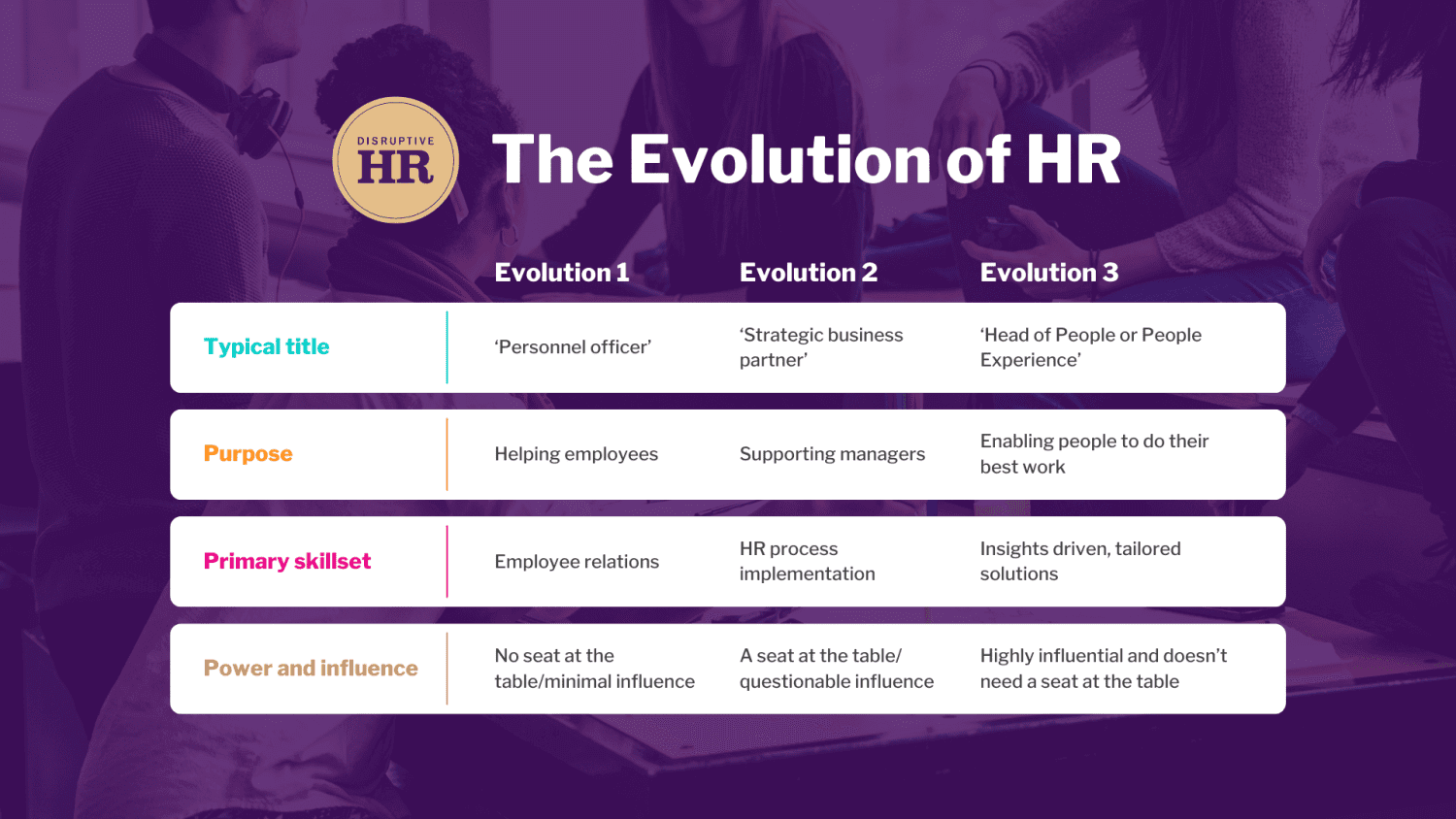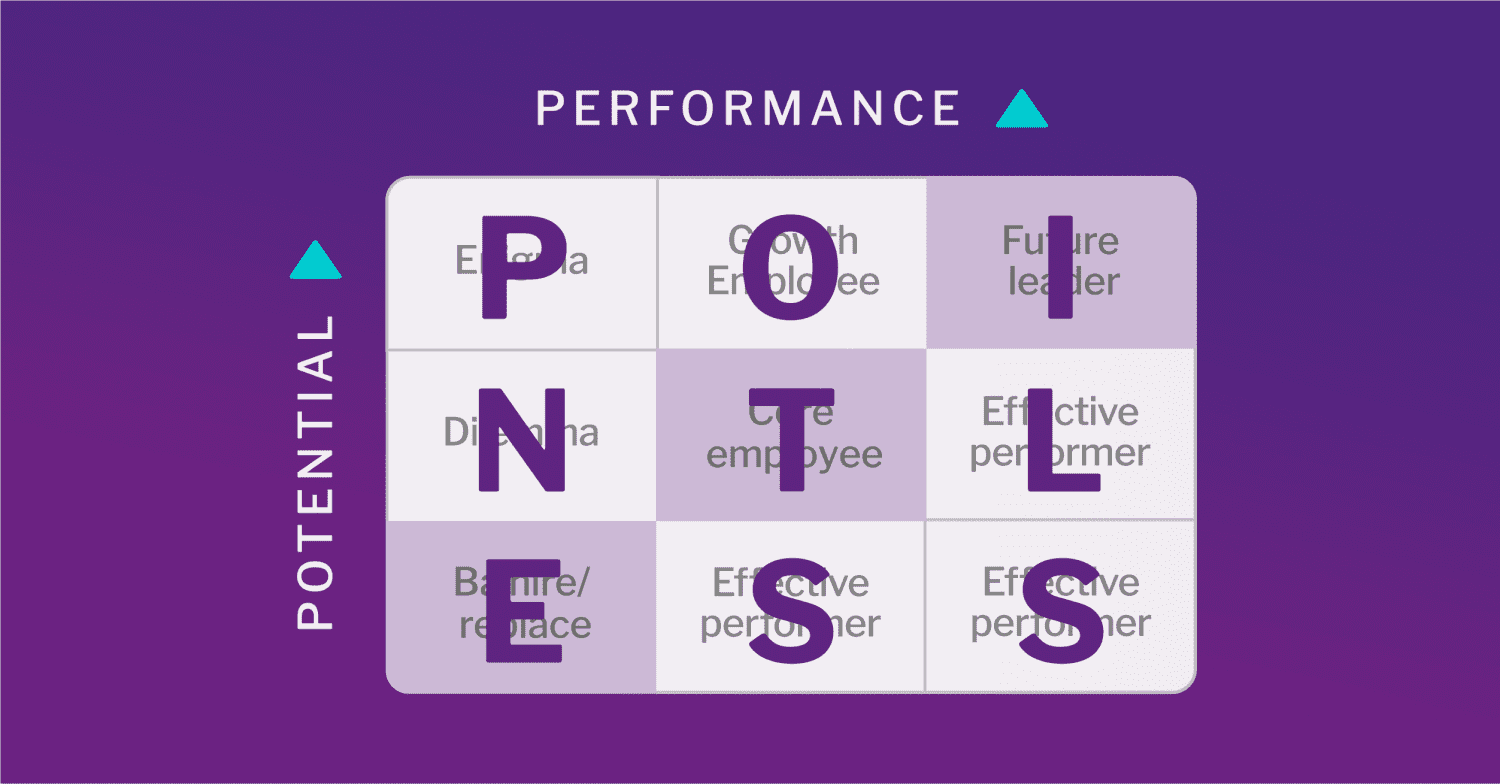The results are in!
Nearly a thousand of you kindly responded to our recent poll where we asked the question ‘What will you be disrupting in HR in 2024?’ This is what you told us:
Leadership Capabilities 37%
HR Skills and Mindsets 24%
Core HR Processes 22%
Digital and AI in HR 12%
Other 5%
Leadership Capabilities
So, regardless of sector or geography, our focus remains on helping to improve our leaders’ people skills. This supports the anecdotal feedback we get from our conversations we have with HR professionals who tell us that the biggest issue they still face is poor line managers. Whilst it’s a bit depressing that, despite our efforts, the experience of many employees isn’t great because of a rubbish boss, there is some good news. Instead of resorting to the ubiquitous leadership development programme, HR is getting savvier when it comes to providing help. You’ve recognised that expensive, one-size-fits-all training programmes for time poor managers is not going to deliver. Instead, we’re seeing more innovative approaches such as peer-to-peer learning, bite-size delivery, nudge-based techniques and user-friendly toolkits that show greater understanding of how people learn and the best way to get leaders to engage.
If you’re planning on disrupting leadership capabilities in 2024 our top tip is to create leadership persona – 3 or 4 types of leaders that work for you – so you can be more targeted in both the types of development you offer them but also the messaging you use to convince them to get involved.
HR Skills and Mindsets
The second biggest focus is on improving ourselves which I think is really positive! We’ve been a bit like cobblers’ children with the worst shoes – always focusing on others and neglecting our own development. As with leadership capabilities, you’re doing things differently. You no longer have to take time out from busy schedules to attend lengthy and frankly, old fashioned training programmes. You’re embracing the range of different learning options and finding cost effective and higher impact ways to develop the team. You’re also changing what you learn as well as how. You’re recognizing that there are a whole new set of skills that the modern HR professional needs, including how to be more agile, how to use data and insights, marketing skills and consultancy.
If you’re planning on disrupting HR skills and mindsets in 2024 our top tip is to focus on two or three key skills that you want to prioritise. We’d suggest focusing on consulting skills, influencing leaders and agile HR.
Core HR Processes
Nearly a quarter of you are planning to disrupt those old-school HR processes that are well past their sell-by date. Performance management remains the most popular for transformation, but talent management, hiring and onboarding are also seeing some radical overhaul. You’re no longer just accepting so-called best practice and you’re recognising that some of these processes just aren’t adequate for a disrupted world. There are some really exciting innovations happening and those tired old processes are finally being replaced with agile, employee-centred options.
If you’re planning on disrupting core HR processes in 2024 then our top tip is to choose one and ask yourself ‘how do we want our people to feel at each stage?’ This will help you be more creative and innovative than simply challenging yourself with changing the process.
Digital and AI in HR
Despite the noise, moving to digital and AI solutions in HR is only the priority for a minority of you. I think that’s understandable. It is a confusing marketplace out there with numerous providers and multiple products. The world of AI is still so new and can seem a bit murky with many of you preferring to keep it in the ‘watching brief’ category for now. I anticipate that this will change over the coming months but for now it’s an also ran.
If you’re planning on disrupting HR with through digital or AI this year, our top tip is to make sure you’re not simply digitising processes that don’t work. Better to transform your approach to, say, performance management first – and then look for a digital product to support rather than assuming a digital solution will do the transformation for you.
So, an exciting and big agenda for you this year. A mix of experimenting with the brand new (AI) and tackling the perennial problems (leadership capabilities). Whatever you’re disrupting this year – it will be worth it! Good luck!
When you’re in an operational HR role, creating the head space to re-think your approach can be really hard. I remember having back-to-back meetings, then getting to the end of the day and thinking – ‘right, now I need to have some BIG thoughts about the future’ – but choosing to go home and watch The West Wing instead! And yet, if we are going to equip our organisation, our leaders and our employees for a disrupted world, then we have to find a way of adding different stimuli and challenging our thinking.
Based on conversations with progressive HR professionals and what has worked for me – Here are some tips on how we can change our thinking in HR.
Focus on the human – not the process
I think we limit our thinking by setting very narrow parameters for what we’re trying to achieve. We want to innovate, but we often set our goal as being the reform of an existing process. This immediately restricts our creativity and results in small, incremental changes rather than the fundamental change we need. So, for example, we often get asked to help clients change their performance management system. There are two key assumptions that are immediately built into the activity – that performance can be ‘managed’ and that they need a system to do it. Not much innovation is going to result. Instead, you can try to broaden the challenge you’re undertaking – by focusing on the human – not the process – problem that you want to solve. So instead of changing the performance management system – ask yourselves ‘how can we enable people to improve their performance?’ Or ‘how can we enable people to be even better at their jobs?’
Widen your sources of stimulation
So, a small confession – when we created Disruptive HR we imagined that all we would need to do is to steal all the innovative ideas from our HR connections with Silicon Valley tech firms! Sadly, when it came down to it – there weren’t many genuinely fresh approaches to steal! So, we had to start from scratch. We found that the best ideas came – not from HR conferences, books and articles – but from adapting ideas from other disciplines. So, we went to conferences on behavioural science, we read books on psychology, we spoke to experts in marketing and advertising, we learned from agile product design. We widened our sources of stimulation. If we just listen to people like us or borrow from so-called best practice, we again limit our ability to be truly innovative. How could you widen your sources of stimulation? Could you invite your marketing colleagues to help you think through your employee experience? Could you learn from your digital colleagues how to move at pace through application of approaches such MVP or sprint planning? Could you broaden the subject matter of the books and articles you read? Could you attend conferences on topics other than HR? Chances are that these efforts will stimulate your thinking in ways that traditional L&D for HR can’t match.
Identify your red flags
Looking back to my time as an HR Director, I had a number of beliefs that prevented me from being braver and more innovative. My assumptions about the leaders, the employees, my team and even the way HR ‘should be done’ would result in me repeating traditional approaches. We all have these assumptions and beliefs but if we can see them as ‘red flags’ – signs that we are about to make the same mistakes, we can start to challenge them.
Maybe you hold beliefs that prevent you from changing the way you think – for example:
- Do you hear yourself saying ‘but if we don’t make it mandatory, they won’t do it?’ And does that take you back to our traditional approach of making managers do things rather than starting with our early adopters and working with them to attract other managers to participate? Does that particular red flag stop you from asking ‘why are they not using this HR process? And maybe if we change it, they might find it more useful?
- Do you find yourself thinking ‘but they won’t do it properly?’ and then creating lots of rules and prescriptive detail to make sure there’s no wriggle room? And does this prevent you from trusting people to use their judgement? Does this result in the HR team having to play the role of compliance officer, rather than coaching managers to build their capabilities?
So, if we widen our sources of stimulation, focus on the human challenge – not the process one and challenge our personal red flags, then we have a chance to genuinely build fresh thinking in HR.
We’ve come a long way since the early days of ‘Personnel’! These days we’re all about enabling people to do their best work and not just serving leaders or employees. Are you ‘fully evolved’?!

Download the infographic here.
HR has a bit of a ‘love-hate’ relationship with the finance function, don’t we? On the one hand, most HR professionals groan at the thought of Finance going anywhere near the people agenda. Insufficient empathy. Overly focused on the tangible assets and the numbers, rather than the intangible value of people. Too interested in short term deliverables and not enough in building long term capability. Too black and white in their judgements. Every HR professional I’ve ever known has voiced these concerns, particularly if we’re unlucky enough to report into them!
On the other, we admire and are slightly envious of their status amongst the leadership team. FDs never seem to struggle with impact and gravitas at the Board. They are pretty good at saying ‘no’ in ways that doesn’t seem to annoy our colleagues as much as when we do it. They are typically great at presenting a coherent argument based on intelligent data and analysis.
‘It’s not you, it’s me’
It’s time to make our relationship with the Finance team a bit healthier and, as in real life, it’s about changing our attitude, not theirs. And the first thing we need to do is to stop trying to BE them.
For too long, we have tried to compensate for our lower status in the hierarchy by copying them. We have adopted their language, for example. We use terms like ‘human capital’ or ‘FTE’s’. We talk about employees being our greatest ‘assets’. We even have our own ‘asset registers’ of people data where we list things like, how many we have, what they’re costing us, and their productivity, in terms of absenteeism rates and churn. But ‘assets’ are things like buildings or computers. We, in HR deal with human beings – beautiful, wonderful, frustrating, mercurial human beings. All of whom are different to one another, who have different needs and wants and who are essentially, unpredictable. Talking about them as assets undermines the complexity and value of our people.

It also means we don’t give our leaders the insights into their people that might help them make better decisions. Churn rates are relatively meaningless in the way we present them. If we are going to copy anyone, we could adopt the approaches used by our Marketing colleagues. Adapting techniques like consumer persona for our employees for example or using a blend of qualitative and quantitative measures to tell a strong and compelling narrative about how our people feel and might be persuaded to change their mindsets and behaviours. We need our own language – one that isn’t filled with finance-like words but which reflect the very different – and human – nature of our work.
You either believe people matter or you don’t

One of the most frequent requests we get from HR professionals is access to data that will help them convince their leaders that it’s worth doing things differently. For example, data that proves offering flexibility will improve engagement. Or proof that getting rid of ratings will improve performance. Or to quantify the ROI on our training investments. Now, I’m not saying that we shouldn’t evaluate what we do. But as the polarisation in the current vaccine debate shows us – data rarely convinces people to change their behaviour. We often find that asking for ‘data as proof’ is usually a way for leaders to put off making a decision or to camouflage their fear of change.
People are not as easy to measure as revenue or profit growth. It is incredibly hard to provide proof on people issues. Instead of trying to compile data that’s bound to be ignored or refuted – we need to appeal to our leaders’ common sense, their own relationships and experiences and the feedback from their own people. Take individual annual bonuses as an example. There’s a ton of data and research that shows individual bonuses fail to either motivate or drive the collaborative behaviours we need today. None of this has made the slightest difference to leaders’ preference for them. If we use scenarios, stories, compelling evidence from our people themselves – we might start to have more of an impact.
As I get older … and probably more impatient with leaders who aren’t prepared to acknowledge that people leadership needs to change… I am increasingly of the view that you either ‘get’ the people stuff – or you don’t. If we spent more time hiring and promoting leaders who ‘get it’ and less time trying to find proof for the ones who don’t – maybe we’d stand more of a chance!
Rather than trying to be as credible as the finance team by copying their language and approach, HR can build our credibility by being deliberately different. We will have a stronger and more powerful voice if we own our role as the people experts. We can do so much better than being a second-rate finance partner. We should stand proud as HR – the experts on human beings.
As unpopular as it might be with leaders who often crave certainty, great HR is just ‘messy’. The HR leaders who are having the most impact, who are creating the conditions where people and organisations can thrive in our disrupted world are those who have the courage to avoid the neat solutions and instead offer light-touch, agile and less perfect solutions to the challenges we face.
Messy HR has a number of features that differentiates it from the traditional neater version;
- It avoids ‘one-size-fits-all’ solutions and prefers customised approaches based on the specific needs and preferences of its customers
- It avoids big programmatic solutions and prefers small, incremental, organic change
- It rarely mandates or insists upon compliance and prefers to build participation through effective marketing strategies
- It uses smart cognitive and emotive change levers rather than believing a process can change behaviours
So, what do these messy HR solutions look like in practice? I thought it would be useful to look at one of our most popular ‘neat’ HR processes – talent management and compare it to the newer messier alternative.
The neat approach to talent management The traditional neat approach is all about the annual completion of the 9 Box Grid as part of our annual talent review, seeing this as the complete picture of talent strength.
The leaders I have worked with who seemed to enjoy the Annual Talent Review were always those who got a kick from structure and process rather than the great people leaders. The latter were able to do the exercise fairly quickly, but it didn’t create any real value for them as they already had a clear picture in their mind about their people and some idea about how they were going to develop, manage or reward each of them. The leaders who enjoyed the process of neatly categorising were typically the ones who did little with the results and saw the activity as being completed the moment they placed the last name on the grid. We know that great talent management is all about movement – moving up, around, in, out and yet the 9 Box Grid often fails to generate that movement and becomes more about allocation. I can see that having a snap shot of your senior teams at a point in time might be useful as a wake-up call or a reassurance but not much more and, given the inaccuracy of that snap shot, why bother to do even that?

It’s not unusual for talent reviews in larger organisations to take several months to complete. Not only is this time consuming for questionable results, it just doesn’t mirror the true pace of most organisations. Every Talent Review I’ve ever produced was always out of date by the time it was complete and leaders who want to move quickly to recruit or promote are justified in their irritation at the time it takes to get a perfect picture.
So, we spend crazy amounts of time and effort producing a complicated (but neat!) grid that is inaccurate and doesn’t add value. Not a great use of time at best and at worst, yet another HR activity that fails to add value and damages our credibility. Finally, messier alternatives are emerging with much greater impact.

So what’s the ‘Messy’ Alternative to the Annual Talent Review? Firstly, it’s not annual! Instead we’re seeing much more fluid and dynamic talent processes and interventions that don’t have a rigid and irrelevant timetable. Approaches like Western Union’s approach where they get clusters of leaders together for an hour a month to ‘talk talent’. No documentation to fill in, no 9 box grids – just conversations about their teams. I’ve always found that most leaders like to talk about their people, they just don’t like doing the paperwork. Getting leaders to discuss talent on a regular basis helps them get better at it too.
Secondly, we’re seeing greater customisation to reflect the different needs of the talent themselves. At 3M, the HR team identified a number of different segments based on the employees’ main motivation for working at 3M. Three examples of these clusters include employees who are:
“In it for my life”—those motivated by alternative work arrangements, as in “I have a life.”
“In it to win it”—those motivated by a fast-paced, highly challenging, risk-taking environment.
“In it to experience it”—those motivated by developmental stretch assignments.
The clusters provide managers with the ability to tailor programs to various employee needs rather than a one-size-fits-all approach to career development.
Thirdly, talent management is much less about focusing on an elite few who have been anointed during the talent management process but instead about creating an environment where employees are encouraged to take responsibility for their own career development. Initiatives such as Nielsen’s ‘Ready to Rotate’ where employees are encouraged to flag when they believe they are ready to do something different is a great example of this change of ownership.
Finally, messier talent management is all about regular conversations between a line manager and their team, not the once a year career discussion at the annual appraisal. Numerous organisations are now embracing this less structured approach and encouraging leaders to have frequent check-ins which include discussions about career development instead.
Messy HR is often going to be harder sell to our Execs than the neater one. Providing proof of leadership capabilities or talent bench strength feels good because it offers the seductive illusion of certainty. Advocating approaches where there are no guarantees, where ‘it depends’, where it takes longer and where it’s harder to measure may meet with greater resistance but it’s honest and in the long run will deliver greater results. I believe the truly impactful HR teams are the ones who are brave enough to promote ‘messy’ in a world that craves ‘neatness’.
Of course, we work in complicated businesses with a myriad of issues – but the people strategy shouldn’t be a remedy for insomnia. We can produce short, punchy documents that get people energised by our plans and which, more importantly, focus on a few key ambitions that actually matter. In this video (just one of the regular 5 Minute Monday series for members of the Disruptive HR Club) we look at what a People Strategy could look like.
Lucy talks to Chief People Officer at DAZN, Shaun Conning about non-traditional routes into and approaches to HR
Lucy interviews Tanith Dodge, one of the most foremost HR Directors in the UK about what it takes to get to the top of the HR profession.
Nebel has done some really exciting things during her time at fashion retailer River Island. In this interview Nebel shares how she uses ‘agile hr’ as well as some great innovations in performance management and employee engagement.

In this podcast Karen talks to Karl Burnett, VP of HR at A+E Networks about some of the great HR initiatives that helped A+E win the award for ‘Best place to work in TV’ in 2018.
A+E Networks UK is a joint venture between Hearst and Sky and a leading media network reaching 60 million homes across 100 countries. Known for award-winning factual and entertainment content they have been entertaining and inspiring audiences for over 20 years and currently partner with over 360 operators broadcasting throughout the Nordics, Benelux, Central Europe, the Middle East and Africa.
Karl joined A+E Networks UK as VP, Human Resources in July 2015. Based in London, Burnett manages Human Resources and Recruitment across all of A+E Networks UK’s territories, including offices in Poland, Denmark, Benelux and South Africa. The business currently employs over 200 people. Burnett joined A+E Networks UK from the BBC, where he held senior HR positions since 2010. Karl served as HR Director for BBC News and Radio, leading an international team of 50 HR professionals. He previously held roles at Nickelodeon UK and Channel 4 Television.